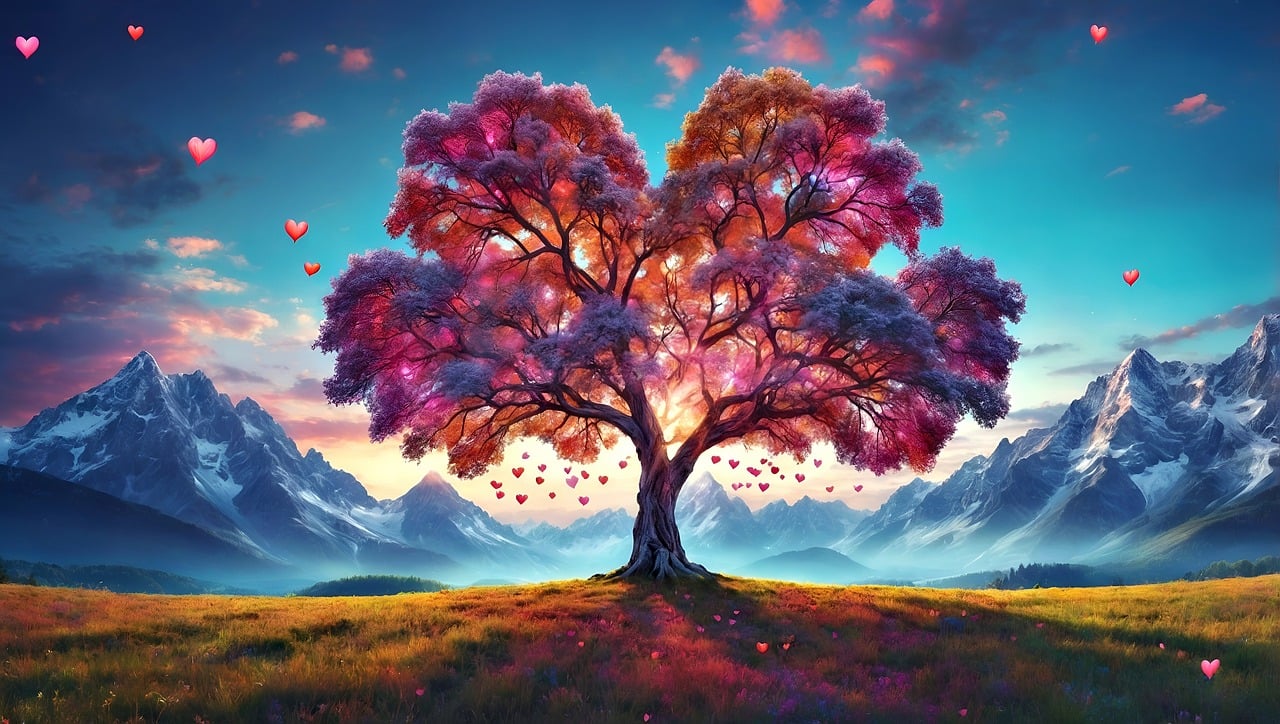Exploring the Spiritual Significance of the Ganges River

Hey there, amazing readers! 🖐️ Just a quick note: yes, we know there are a lot of ads here. Trust us, we get it—it’s not the prettiest look, but they help us keep this blog alive and kicking. Those pesky little ads cover the costs of all the behind-the-scenes magic, from hosting and tech stuff to creating content we hope you’ll love.
We’re committed to delivering quality posts, and your support (even just sticking around despite the ads) means everything to us. So, bear with us, and thanks for helping us keep the good vibes rolling. Now, on to the fun stuff! 😉
TRANSLATE BUTTON AT THE END OF THE ARTICLE
The Ganges River, also known as the Ganga, is one of the most revered and sacred rivers in the world.
It flows through northern India and Bangladesh, and its spiritual significance in Hinduism is unparalleled.
This article will delve into the deep-rooted spiritual meaning of the Ganges River, exploring its history, mythology, rituals, and beliefs associated with it, as well as its ecological significance and cultural impact.
The Mythological Origins
To understand the spiritual significance of the Ganges, we must first explore its mythological origins.
According to Hindu beliefs, the Ganges is said to have originated from the heavens.
It is believed that Lord Brahma, the creator of the universe, brought the river down to Earth to purify the souls of the living and the dead.
The story of the Ganges’ descent to Earth is intertwined with the myth of King Bhagirath, who prayed to Lord Shiva to bring the Ganges to Earth to cleanse the sins of his ancestors.
Lord Shiva, in his benevolence, allowed the river to flow through his matted hair, thus preventing its immense force from devastating the Earth.
The River of Purification
One of the primary spiritual meanings associated with the Ganges is purification.
Hindus believe that bathing in the Ganges has the power to cleanse one’s soul of sins and impurities.
It is not just a physical act but a profound spiritual experience.
Devotees from all over the world come to the Ganges to take a dip in its holy waters, seeking spiritual renewal.
Bathing in the Ganges is not limited to rituals; it is an everyday practice for many people living along its banks.
The river plays a vital role in their daily lives.
As the sun rises, people gather on the ghats, or steps leading to the river, to immerse themselves in its sacred waters.
This act symbolizes the washing away of one’s sins and the embrace of purity.
Rituals and Ceremonies
The Ganges is a stage for various rituals and ceremonies, each carrying its own spiritual significance.
One of the most significant rituals is the Ganga Aarti, a daily evening ceremony performed at the riverbanks in cities like Varanasi and Haridwar.
This elaborate ritual involves chanting, singing, and offerings to the river.
Devotees light lamps and float them on the river as an offering to Goddess Ganga.
This act symbolizes the illumination of one’s life with spiritual knowledge.
Another important ceremony is the immersion of ashes.
It is believed that the Ganges has the power to release the souls of the deceased from the cycle of birth and death.
Families bring the ashes of their loved ones to immerse them in the sacred waters, granting the departed a peaceful journey to the afterlife.
This ritual is deeply emotional, as it signifies the final farewell to a loved one and their spiritual release.
Varanasi: The Spiritual Heart of the Ganges
Varanasi, also known as Kashi, is often referred to as the spiritual heart of the Ganges.
It is one of the oldest cities in the world and a major pilgrimage site for Hindus.
The city’s ghats are a hub of spiritual activities.
Devotees and pilgrims gather here to perform rituals, meditate, and seek spiritual enlightenment.
The ghats of Varanasi are diverse and each has its unique significance.
The Dashashwamedh Ghat is known for its grand Ganga Aarti ceremony, while the Manikarnika Ghat is famous for cremation rituals.
The Assi Ghat is associated with the place where the Ganges meets the Assi River.
These ghats collectively offer a glimpse into the spiritual diversity of the Ganges.
Environmental Concerns
While the Ganges holds immense spiritual importance, it also faces severe environmental challenges.
Pollution, industrial waste, and sewage have severely polluted its waters.
This poses a significant threat to the river’s ecological balance and the health of those who depend on it.
Efforts are underway to clean and rejuvenate the Ganges.
The Indian government has launched the “Namami Gange” project, which aims to reduce pollution and ensure the sustainable development of the Ganges basin.
It is a massive undertaking, but it signifies the recognition of the river’s ecological importance in addition to its spiritual significance.
The Ganges in Literature and Art
The spiritual significance of the Ganges extends beyond religious practices.
It has inspired countless poets, writers, and artists.
The river has been a recurring theme in Indian literature, symbolizing purity, divinity, and the eternal flow of life.
In literature, the Ganges is often depicted as a symbol of life’s continuous journey.
Its waters represent the flow of time, the cycle of life and death, and the quest for spiritual enlightenment.
Many classical and contemporary Indian writers have drawn inspiration from the river’s spiritual symbolism in their works.
The Ganges also plays a central role in Indian art.
Paintings, sculptures, and other forms of artistic expression often feature the river.
These artworks capture the essence of the Ganges as a source of spiritual nourishment and a symbol of profound cultural identity.
Conclusion
The Ganges River is not just a body of water; it is a symbol of faith, purity, and devotion.
Its spiritual significance has touched the hearts of millions, and it continues to be a source of inspiration and reverence.
The Ganges teaches us the profound connection between nature and spirituality, reminding us of the importance of preserving such sacred sites for future generations.
FAQs
1.
What is the significance of the Ganges River in Hinduism?
The Ganges River is considered one of the holiest rivers in Hinduism.
It is believed to have the power to purify the soul and grant spiritual redemption.
2.
Why is Varanasi important in the context of the Ganges?
Varanasi is considered the spiritual heart of the Ganges due to its numerous ghats and rituals that take place along the riverbanks.
3.
What is the Ganga Aarti ceremony?
The Ganga Aarti is a daily evening ritual performed on the banks of the Ganges, involving chanting, singing, and offerings to the river.
4.
How does the Ganges River impact the environment?
The Ganges faces environmental challenges due to pollution, industrial waste, and sewage, which threaten its ecological balance and the health of those who rely on it.
5.
What role does the Ganges play in literature and art?
The Ganges has been a prominent theme in Indian literature and art, symbolizing purity, divinity, and the eternal flow of life.
6.
How does the Ganges impact the afterlife according to Hindu beliefs?
Hindus believe that immersing the ashes of the deceased in the Ganges helps release their souls from the cycle of birth and death.
7.
What efforts are being made to address the pollution of the Ganges?
Various initiatives and campaigns are ongoing to clean and rejuvenate the Ganges, although the task is challenging due to the scale of pollution and waste.
8.
Can you elaborate on the cultural significance of the Ganges in India?
The Ganges is not only a religious symbol but also a cultural icon in India.
It has shaped the way of life, art, and literature of the region, and its influence can be seen in
various aspects of Indian culture.
9.
How has the Ganges River inspired art and artists throughout history?
The Ganges has been a muse for artists throughout history.
Paintings, sculptures, and other forms of art often depict the river’s spiritual and cultural significance, showcasing its influence on the artistic heritage of India.
10.
Are there any festivals or celebrations related to the Ganges that are of significance?
Yes, there are festivals like Karthik Poornima and Chhath Puja that hold special significance along the Ganges.
These festivals involve unique rituals and celebrations that deepen the spiritual connection between people and the river.

The Enlightenment Journey is a remarkable collection of writings authored by a distinguished group of experts in the fields of spirituality, new age, and esoteric knowledge.
This anthology features a diverse assembly of well-experienced authors who bring their profound insights and credible perspectives to the forefront.
Each contributor possesses a wealth of knowledge and wisdom, making them authorities in their respective domains.
Together, they offer readers a transformative journey into the realms of spiritual growth, self-discovery, and esoteric enlightenment.
The Enlightenment Journey is a testament to the collective expertise of these luminaries, providing readers with a rich tapestry of ideas and information to illuminate their spiritual path.
Our Diverse Expertise 🌟
While our primary focus is on spirituality and esotericism, we are equally passionate about exploring a wide range of other topics and niches 🌍📚. Our experienced team is dedicated to delivering high-quality, informative content across various subjects ✨.
To ensure we provide the most accurate and valuable insights, we collaborate with trusted experts in their respective domains 🧑🏫👩🏫. This allows us to offer well-rounded perspectives and knowledge to our readers.
Our blog originally focused on spirituality and metaphysics, but we’ve since expanded to cover a wide range of niches. Don’t worry—we continue to publish a lot of articles on spirituality! Frequently visit our blog to explore our diverse content and stay tuned for more insightful reads.






















